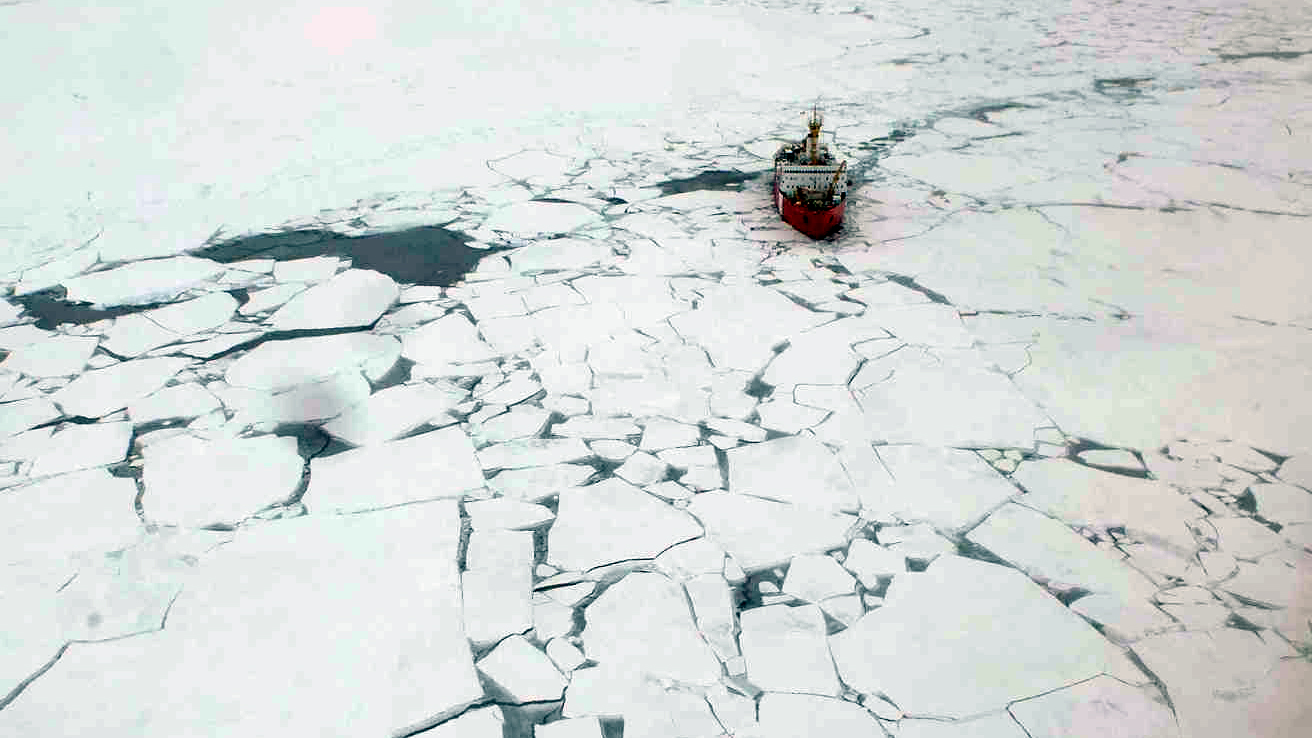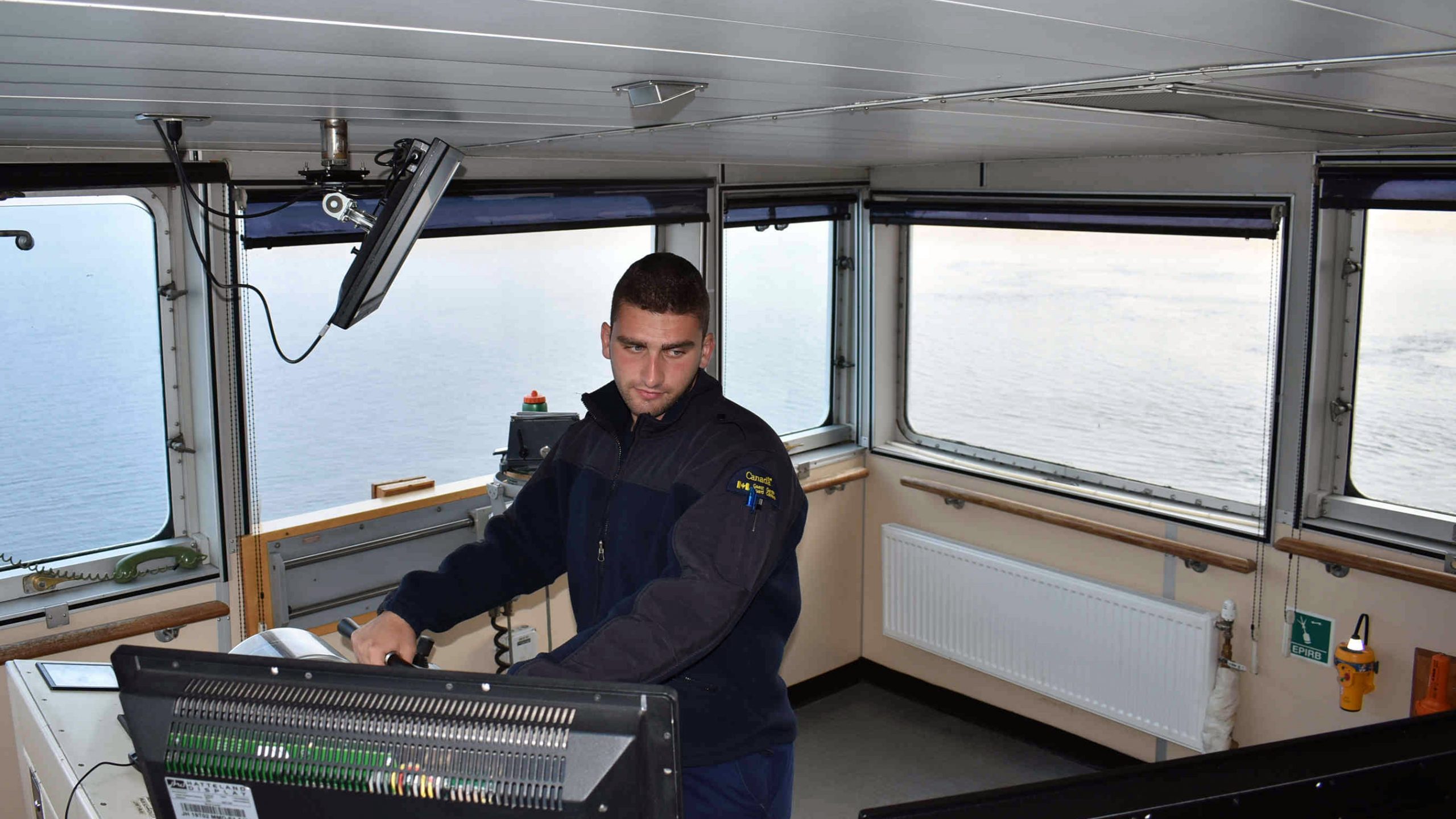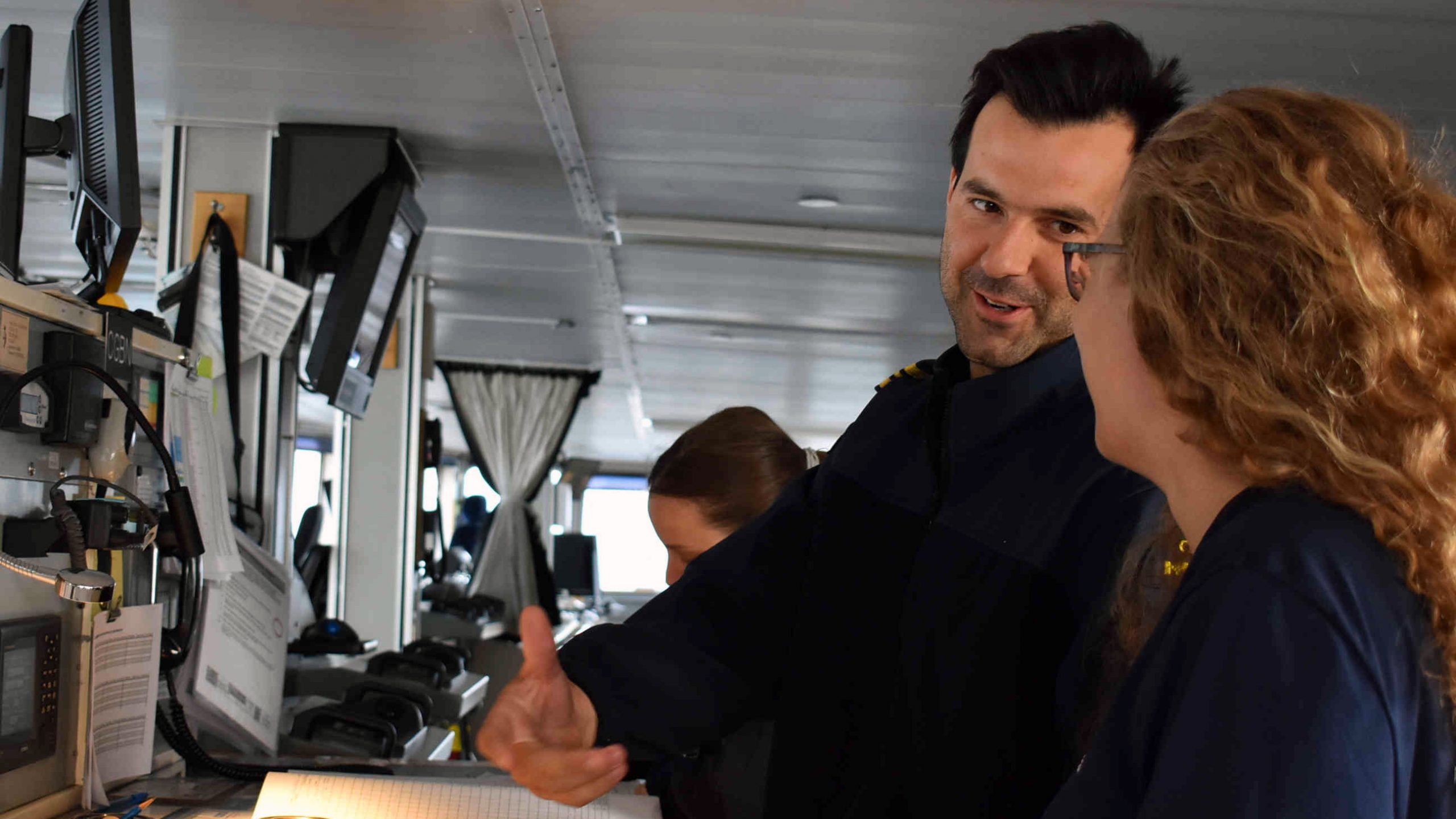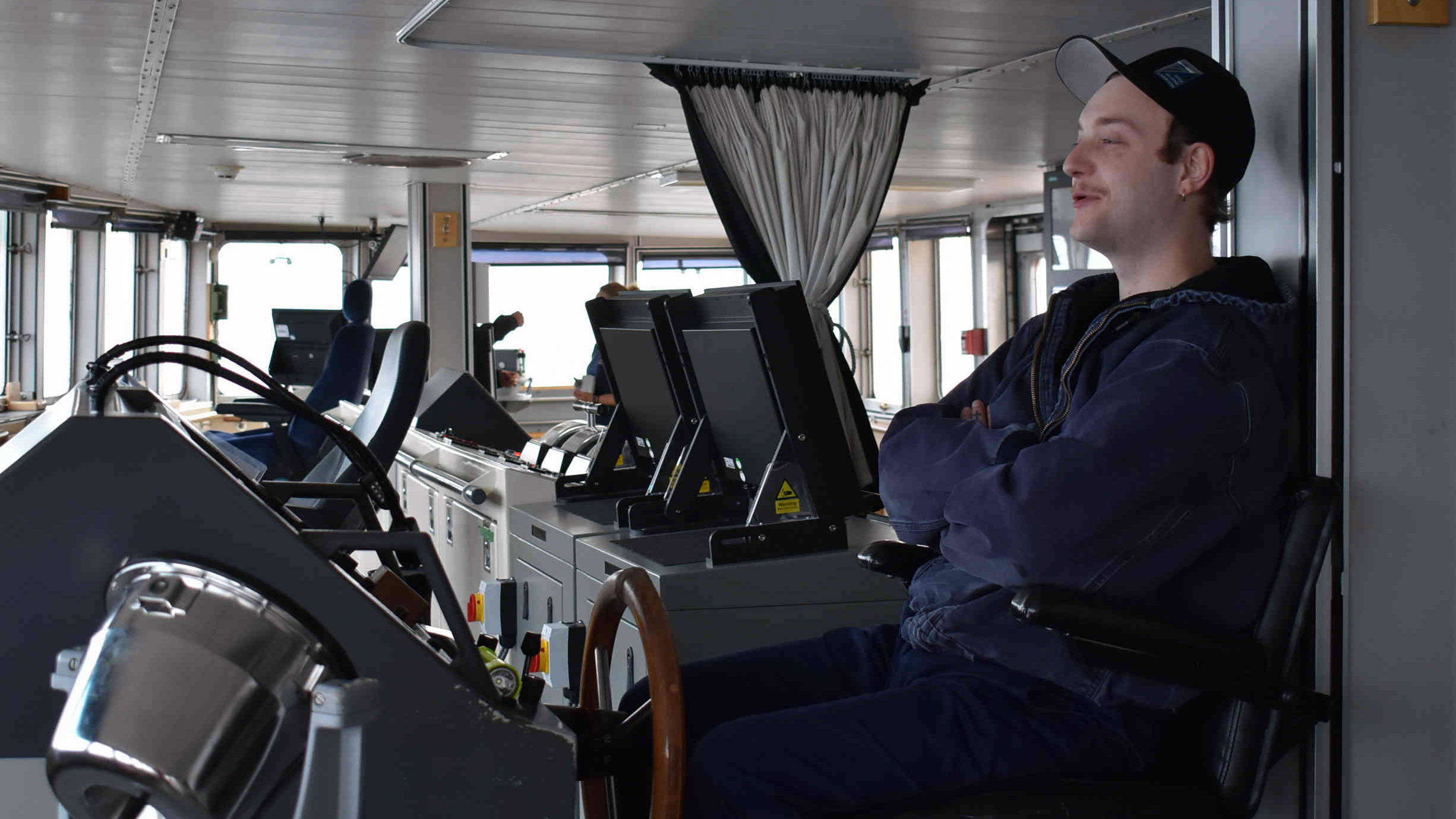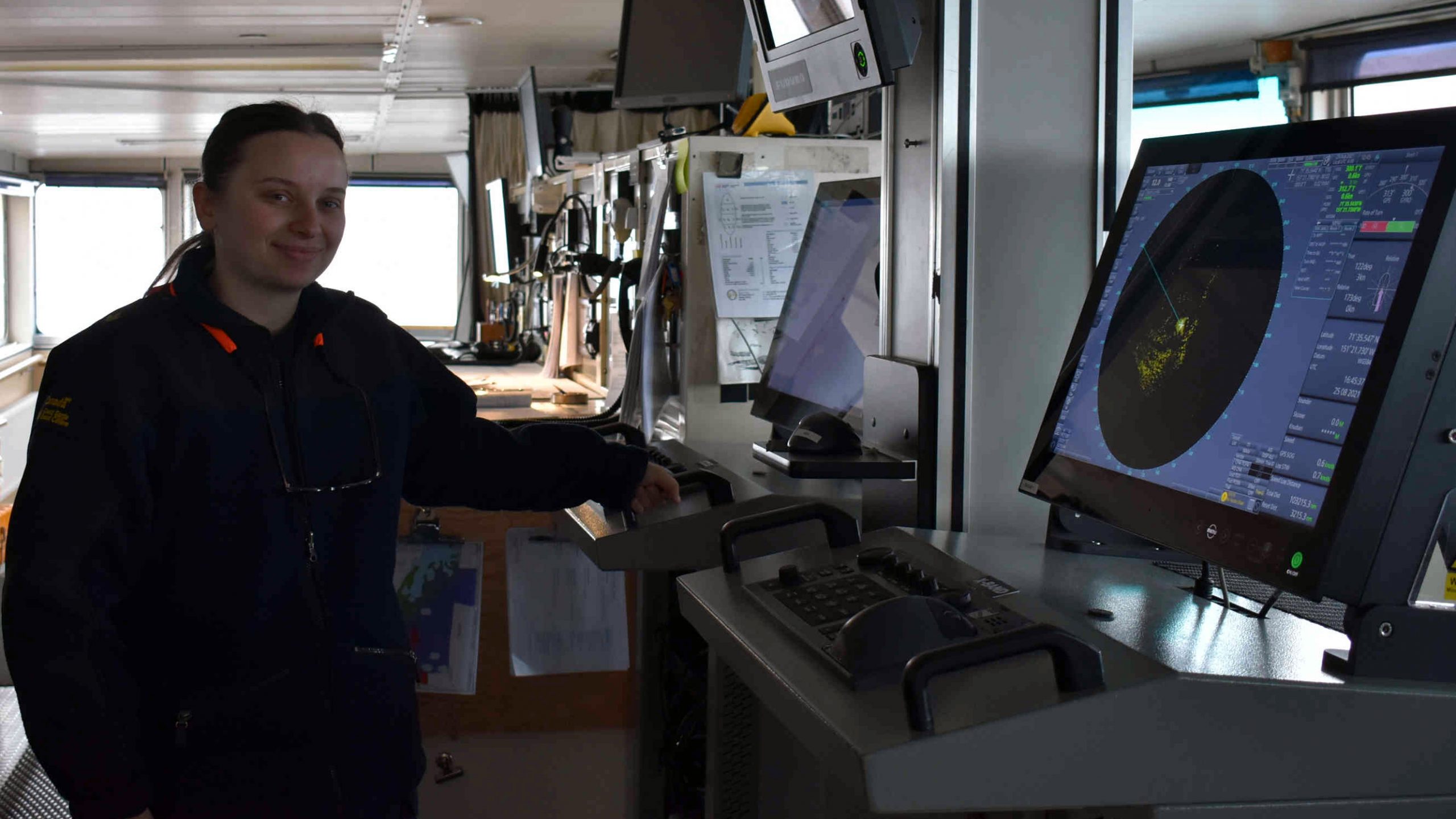Dispatch 4: What does the Canadian Coast Guard do in the Arctic?
Helen Gemmrich
August 23, 2021
What does the Louis do when she’s not carrying a bunch of scientists through polar waters? Quite a bit, apparently! Here’s what I learned from Third Mate Alex Missi.
In the Arctic, the Canadian Coast Guard (CCG) helps with science expeditions, cargo work, ice escorts and search and rescue.
The highest priority mission is always search and rescue. The nearest ship responds to the call, but depending on the severity of the situation, a second ship may follow and take over. Sometimes, the ship in distress simply ran out of fuel, so the Louis (or another coast guard ship) shares her fuel to get everyone going again.
CCG ships can also be on “standby to shipping,” meaning their primary mission is to escort other vessels through the ice. Indigenous and mining communities rely on cargo ships for essential supplies, but the Arctic shipping season is limited, from June to November, when ice concentration is lower. Most cargo ships are unable to break through ice, so they get an ice escort from the coast guard. Some escorts need a “harbour breakout” when there is too much ice in the port for a ship to dock safely. The icebreaker “flushes the harbour” just long enough for the ship to pass through – only a few minutes pass before the ice closes in again! Some coast guard ships carry cargo as well, for example the CCGS Des Groseilliers, which brings fuel drums to Canada’s northern research base in Eureka, Nunavut, roughly 1,100 kilometres from the North Pole.
The coast guard also helps with construction projects, such as traffic control stations or helicopter landing pads, to make the Arctic region more accessible and easier to respond to in emergencies.
On the science side of things, in addition to research expeditions like ours, the coast guard maps the Arctic seafloor with the Canadian Hydrographic Service (CHS). Travelling back and forth in a strict grid pattern may not sound that exciting, but the nautical charts created from the data are vital for safe passage through these waters. The CCGS Terry Fox carries two smaller hydrography boats to take measurements in areas that are hard to get to with larger ships. Every year, the coast guard also wakes up Canada’s remote weather stations from winter hibernation, packing them up again at the end of the season, in November.
Last but not least on the to-do list: as an official representative of the federal government in the North, the Canadian Coast Guard participates in community visits and international relations. They also patrol with fisheries law enforcement in high-traffic fishing areas in the eastern Arctic.
